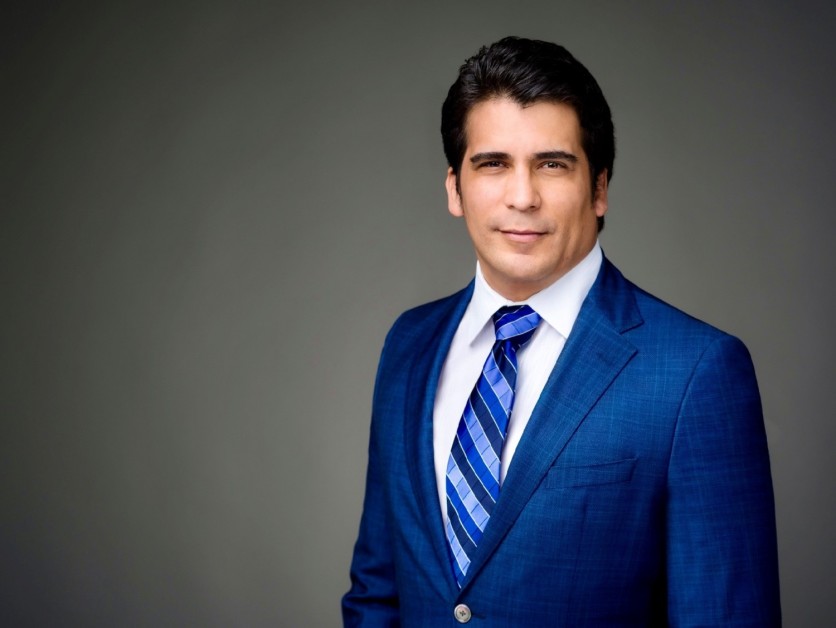
Nestor Cabrera-Munoz grew up in a household of doctors; his mom is a family medicine doctor, and his dad is an anesthesiologist. In high school, when it came time to decide which path to pursue, Nestor had to choose between following in his parents' footsteps and studying medicine or forging a new path and studying engineering. Because of its down-the-line versatility, he chose to study Mechanical-Electrical Engineering at Tecnologico de Monterrey in Mexico. He graduated first in his class, eager to begin solving humanity's problems.
For the next year and a half, Nestor worked as a principal engineer at Danfoss, a company that manufactures hermetic filter driers for HVAC systems. He became a project manager at the company, finding a way to not only improve the performance of the filter driers but also to cut production costs. He soon moved to General Motors and started working as a manufacturing engineer, but during this time, he realized he needed more "why" to his work. To Nestor, an 'element of life' was missing in his career, and he felt a pull toward medicine.
Because of his existing background in the world of engineering, Nestor decided to pursue a degree in Biomedical Engineering, combining his yearning to dive into the medical world with his love for engineering. He completed the Biomedical Engineering M.S. program at the University of Southern California in Los Angeles, then was awarded a Doctoral Fellowship and went on to pursue a Ph.D. at the university. His studies at USC were supported by critical research projects with prominent professors; Nestor conducted research projects regarding Cardiorespiratory Sleep Disorders, Biomedical Microsystems, and Biomedical Ultrasonic Transducers.
During his doctoral studies, he also became interested in business development and technology commercialization, obtaining a Graduate Certificate in Technology Commercialization from USC, with an Executive MBA currently underway from Quantic School of Business and Technology.
Nestor's work with Ultrasonic Transducers was vast; he worked as a research assistant at the National Institutes of Health Resource Center for Medical Ultrasonic Transducer Technology for nearly 6 years. There, he became an R&D expert in ultrasound 1-D and 2-D phased arrays and single-element transducers for medical applications and non-destructive testing. The ability to predict array and single-element transducer performance including acoustic and thermal outputs is critical for the development of new ultrasound technologies, and Nestor became one of the nation's best researchers in this specialty.
Dr. Eric Ryan, the founder and CEO of Provisio Medical, visited the NIH Resource Center for Medical Ultrasonic Transducer Technology to find someone that could help him develop the concept upon which Provisio Medical was founded. Nestor stepped into the role and became the co-founder of the company. First, he developed and tested proof-of-concept intravascular ultrasound (IVUS) devices that used miniature single-element transducers. During the last year of his Ph.D. program and after graduation, Nestor developed and tested Provisio's first functional IVUS prototype catheters and ex-vivo experimental setup to help source the first two rounds of funding.
His contributions to the medical community are vast and cutting-edge. Dr. Cabrera-Munoz created a 30-MHz forward-looking intravascular catheter to use for peripheral vasculature navigation. Over 17 million Americans suffer from Peripheral Arterial Disease, and this catheter, which includes a 32-element, 2-2 phased array at the tip to produce images without a blind spot in the center, can quite literally help save their lives. With less risk to the arterial walls, the procedure is more effective and less invasive.
He also led a project to create a 15-MHz side-looking phased-array catheter which was designed for a robotic surgery arm that is being developed by the Hamlyn Centre for Robotic Surgery in Imperial College London. Meant to treat colorectal cancer, the robotic surgery arm cannot use currently available endorectal imaging probes due to the size of their diameter. With Nestor's 3.3-mm miniature catheter design, the robotic arm can now be equipped with an ultrasound imaging catheter.
Clearly, Dr. Cabrera-Munoz's contributions to the medical community span further than he ever could have dreamed. He takes every challenge head-on, is committed to producing incredible products, and isn't afraid to step outside the box when making something new. His work with ultrasound technology and catheter innovation will leave a lasting legacy on the international medical community and all those it serves. Dr. Cabrera-Munoz's career showcases the necessity of engineers existing in medical spaces to make us all safer, more comfortable, and healthier.
ⓒ 2025 TECHTIMES.com All rights reserved. Do not reproduce without permission.




